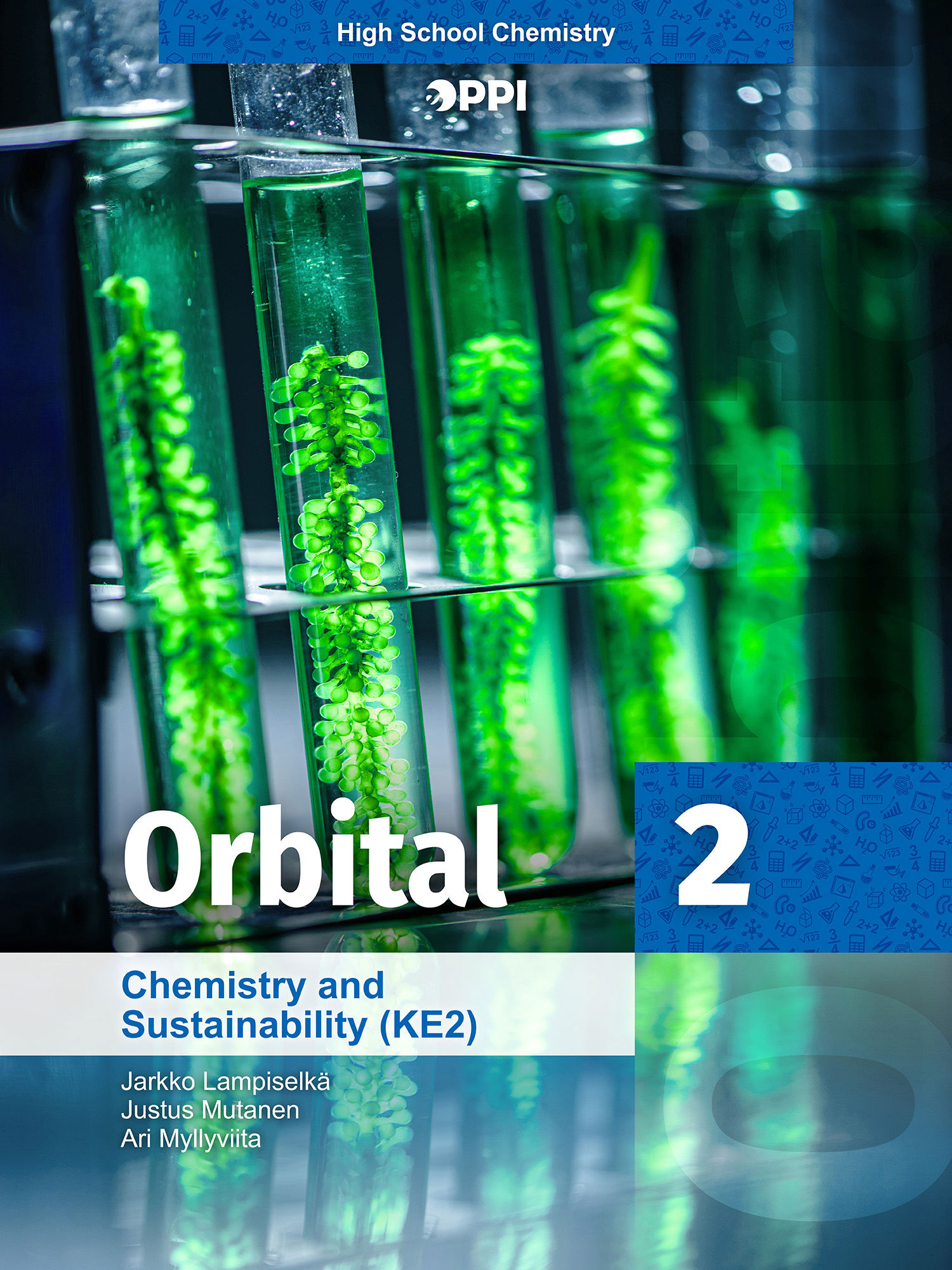
Tekijät
Jarkko Lampiselkä, Justus Mutanen & Ari MyllyviitaTehtäväkokoelman tekijät
Jarkko Lampiselkä, Justus Mutanen & Ari MyllyviitaKustantamo
Kuuluu paketteihin

-
Oppimateriaali sisältää 21 lukua ja 77 tehtävää, joista 10 sijaitsee kirjan luvuissa ja 67 opettajan tehtäväkokoelmassa.
-
Tekijät
Jarkko Lampiselkä, Justus Mutanen & Ari Myllyviita -
Tehtäväkokoelman tekijät
Jarkko Lampiselkä, Justus Mutanen & Ari Myllyviita -
Aine
Kemia, luonnontiede -
Luokka
Lukio -
Kurssi
CH2 Chemistry and sustainability -
Teoksen kieli
Englanti -
Kustantamo
e-Oppi Oy -
Kuuluu paketteihin
The Orbital 2 e-book covers the second module of upper secondary school chemistry, "Chemistry and a sustainable future". It is one of the two compulsory chemistry modules in upper secondary school.
The Orbital series is a modern learning material for chemistry that encourages the student to think about, investigate, and understand chemistry. The text is designed to captivate the reader. The examples feature important chemical processes and discoveries that are familiar from everyday life. In addition to traditional text explanations, animations, videos and 3D models have also been used to visualise processes.
The tasks follow the new digital final exam model, progressing from tasks that test memory skills through concepts to practical and more challenging tasks. Models and visualisation play a key role in learning chemistry.
Chemistry is learnt by visualising your own thoughts and by presenting them to other students. Discussions help to develop our own thought processes. Modelling uses simulations, but you will also need a pen and paper. Students can freely choose between visualisation methods.
Chemistry is also learnt together. Learning is social in nature, so the material encourages students to work together.
1. To the reader
Kirjanmerkki |
Luku |
|---|---|
| 1.1. | Foreword |
2. Molecular models and compound formulae
Kirjanmerkki |
Luku |
|---|---|
| 2.1. |
Molecular models and formulae
Tutustu ilmaiseksi! |
3. Strong bonds
Kirjanmerkki |
Luku |
|---|---|
| 3.1. | General bonding principles |
| 3.2. | Covalent bond |
| 3.3. | Ionic bond |
| 3.4. | Metallic bond |
| 3.5. | Experiment |
4. Weak bonds
Kirjanmerkki |
Luku |
|---|---|
| 4.1. | Dipole-dipole bond |
| 4.2. | Dispersion forces |
| 4.3. | Ion-dipole bonds |
5. Material properties
Kirjanmerkki |
Luku |
|---|---|
| 5.1. | States |
| 5.2. | Solubility |
| 5.3. | Acidity and basicity |
| 5.4. | Experiments and modelling |
6. Circular economy and green chemistry
Kirjanmerkki |
Luku |
|---|---|
| 6.1. | Environmental chemistry |
| 6.2. | Green chemistry and sustainable development |
| 6.3. | Circular economy and life cycle approach |
| 6.4. | Reducing emissions |
| 6.5. | Chemistry in society |
7. Appendices
Kirjanmerkki |
Luku |
|---|---|
| 7.1. | For the teacher |
| 7.2. | Terms and concepts |


